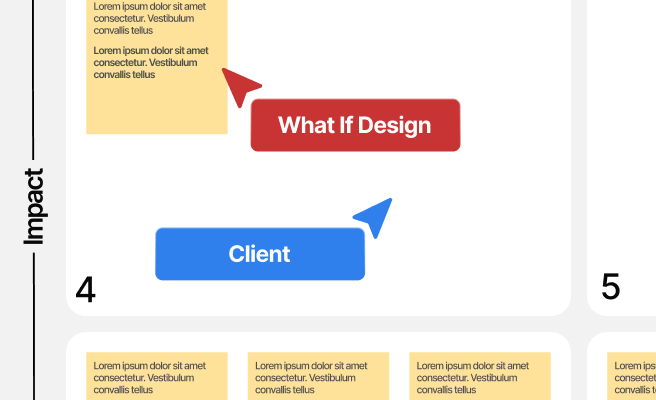Qualitative Data
<p>Qualitative data refers to non-numerical information that captures the qualities, characteristics, and subjective aspects of a phenomenon. Unlike quantitative data, which is focused on numbers and measurable factors, qualitative data is rich in detail and often gathered through methods such as interviews, focus groups, and observations. This type of data provides in-depth insights into people's thoughts, behaviors, and interactions, making it invaluable for understanding complex issues and experiences.</p>
<p>Historically, qualitative data has been used extensively in fields such as sociology, anthropology, and psychology to explore social phenomena and human behavior. In recent years, its application has expanded into areas like marketing, user experience (UX) design, and climate tech, where understanding user needs and motivations is crucial for creating impactful solutions.</p>
<h2>Importance of Qualitative Data in UX Design</h2>
<p>In the realm of UX design, qualitative data is essential for creating user-centered products. By leveraging qualitative insights, designers can identify pain points, understand user behaviors, and develop solutions that enhance the overall user experience. This approach is particularly vital in climate tech, where user engagement and behavior change are key to the success of digital solutions aimed at addressing environmental challenges.</p>
<p>For example, conducting <a href="https://www.nngroup.com/articles/ux-research-methods/" style="color:#2896FF; text-decoration:underline;">user interviews</a> and usability testing can reveal how users interact with a platform designed to monitor carbon footprints. These insights help designers iterate on their products, making them more intuitive and effective in promoting sustainable practices.</p>
<h3>Methods of Collecting Qualitative Data</h3>
<p>There are several methods for collecting qualitative data, each with its own strengths and applications:</p>
<ul>
<li><strong>Interviews:</strong> One-on-one or group conversations that provide deep insights into individual experiences and perspectives.</li>
<li><strong>Focus Groups:</strong> Guided discussions with a group of participants to explore collective views and generate diverse ideas.</li>
<li><strong>Observations:</strong> Systematic recording of behaviors and interactions in natural settings to understand context and dynamics.</li>
<li><strong>Ethnography:</strong> In-depth study of people and cultures through immersive fieldwork and participation.</li>
</ul>
<p>Each of these methods can be tailored to specific research goals and contexts, enabling researchers to gather rich, detailed data that quantitative methods might overlook.</p>
<h3>Analyzing Qualitative Data</h3>
<p>Once collected, qualitative data must be analyzed to extract meaningful patterns and themes. This process often involves:</p>
<ul>
<li><strong>Coding:</strong> Assigning labels to segments of data to categorize and organize information.</li>
<li><strong>Thematic Analysis:</strong> Identifying recurring themes and patterns across the data to construct a coherent narrative.</li>
<li><strong>Narrative Analysis:</strong> Examining stories and personal accounts to understand how individuals make sense of their experiences.</li>
</ul>
<p>Using tools like <a href="https://atlasti.com/" style="color:#2896FF; text-decoration:underline;">ATLAS.ti</a> or <a href="https://www.qsrinternational.com/nvivo-qualitative-data-analysis-software/home" style="color:#2896FF; text-decoration:underline;">NVivo</a> can streamline the analysis process, allowing researchers to manage large volumes of data and uncover deeper insights.</p>
<h2>Applications and Benefits</h2>
<p>The applications of qualitative data are vast, spanning various industries and purposes. In climate tech, for instance, qualitative data is instrumental in understanding how users perceive and interact with technologies aimed at reducing carbon emissions. By capturing user feedback and experiences, companies can design more effective tools that align with user needs and promote sustainable behaviors.</p>
<p>Moreover, qualitative data provides several benefits:</p>
<ul>
<li><strong>Depth of Understanding:</strong> Offers nuanced insights into complex issues that numbers alone cannot capture.</li>
<li><strong>User-Centric Design:</strong> Informs the development of products and services that truly resonate with users.</li>
<li><strong>Flexibility:</strong> Adaptable to various research contexts and questions, allowing for creative and exploratory approaches.</li>
</ul>
<p>In conclusion, qualitative data is a powerful tool for gaining a comprehensive understanding of user experiences and behaviors. By incorporating qualitative insights into design processes, especially in fields like climate tech, businesses can create solutions that are not only effective but also deeply connected to the needs and motivations of their users. For more information on leveraging qualitative data in UX design, explore resources like <a href="https://www.usability.gov/how-to-and-tools/methods/qualitative.html" style="color:#2896FF; text-decoration:underline;">Usability.gov</a>.</p> <p>Increase user engagement that converts your demos into sales. Optimise your UX strategies with our audits.
<p>Fill out the <a href="https://tally.so/r/n97pxQ" style="color:#2896FF; text-decoration:underline;">UX Audit form</a> to get started. Ready to discuss your needs? <a href="https://cal.com/akhilak/what-if-design?duration=25" style="color:#2896FF; text-decoration:underline;">Book a consultation call</a> with us today.</p></p>

Let's scale your impact with great design.
Free consultation, no sales pitch
Thank you! Your submission has been received!
Oops! Something went wrong while submitting the form.
Let’s talk
Nothing great is built alone.
Let’s connect about your vision, our work and how we can collaborate.
Get in touch

